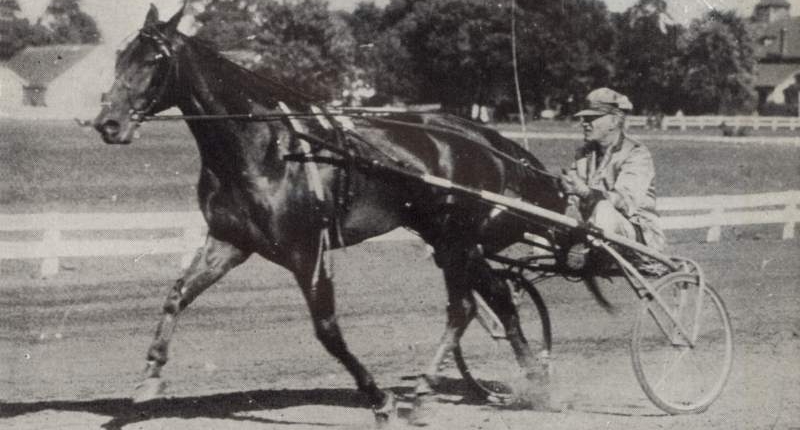The Hambo Winner that disappeared
by Lisa Harkema
Volomite is generally considered one of the best stallions in trotting history. It’s important to remember, though, that Volomite was only the second best in his crop on the track. However, while Volomite proved his worth at stud in safe surroundings in the US, quite the opposite was the case with his superior, Walter Dear, who eventually was trapped in a war-torn Germany.. This is the story of the only Hambletonian winner in history whose fate is unknown.
Walter Dear was bred and owned, until he was exported, by William Cane’s Good Time Stables located in Goshen. Cane would often name horses horses for his friends and acquaintances. The horse got his name from publisher Walter Moore Dear, who published the Jersey Journal from 1908 to 1948. The four-legged Walter Dear established his dominance in the 1926 crop early on and came into the Hambletonian fresh off winning the Kentucky Futurity in straight heats the previous week – because of rainouts, the second time in three years, the Hambletonian had been postponed until October 8 and moved Lexington that year.
A winner of his six previous races, the Hambletonian was in the eyes of most people a foregone conclusion. Even though some believed Volomite could possibly stage an upset, it turned out exactly as most people had predicted, with two easy heat wins for Walter Dear. This victory made the colt historic as he was the first from Peter the Great’s sireline to win the Hambletonian.
Shortly after the Hambletonian win Cane was offered $25,000 for Walter Dear by the German duo Bruno Cassirer and Arthur Brümmer. Cassirer, an art dealer and owner of a publishing house in Germany, had personally saved the Berlin’s Mariendorf racetrack from going bankrupt in 1913 by assuming personal responsibility for all debts and displaying great leadership skills by modernizing the organization and also getting rid of internal unrest in the Berlin and German trotting community. Cassirer llso owned the stud farm Gestüt Lindenhof just north of Templin, around 80 kilometers (50 miles) north of Berlin, not too far from the Polish border. Previously owning a farm in Damsbrück, Cassirer had bought Lindenhof in 1931. It was an impressive facility. A 1000 meter (5/8 mile) training track was constructed and champion trainer Charlie Mills established his operation here. In 1933 Cassirer sold the facilities, at least in name, to Charlie Mills, but in reality he had no choice. After all, Cassirer was Jewish and with Hitler’s rise to power in that year it became increasingly difficult to own property and run a business. He would continue to try for a few more years, but in 1936 his publishing house lost the right to publish and in 1938 Cassirer fled with his family to England. He passed away in Oxford in 1941, 68 years old.
Hello!
I hope you will find our site interesting and educational while digging through all the material we have collected over the years.
Articles
We have a unique collection of articles on the site, historic and informative, and we keep filling it, so do stop by every now and then to check it out. New additions will be announced in the news section too.
Photos
A collection of hundreds of out of the ordinary trotters or significant horses through history of our sport. You will find photos, lifetime marks and earnings, pedigree with cross links to other horses in the collection

